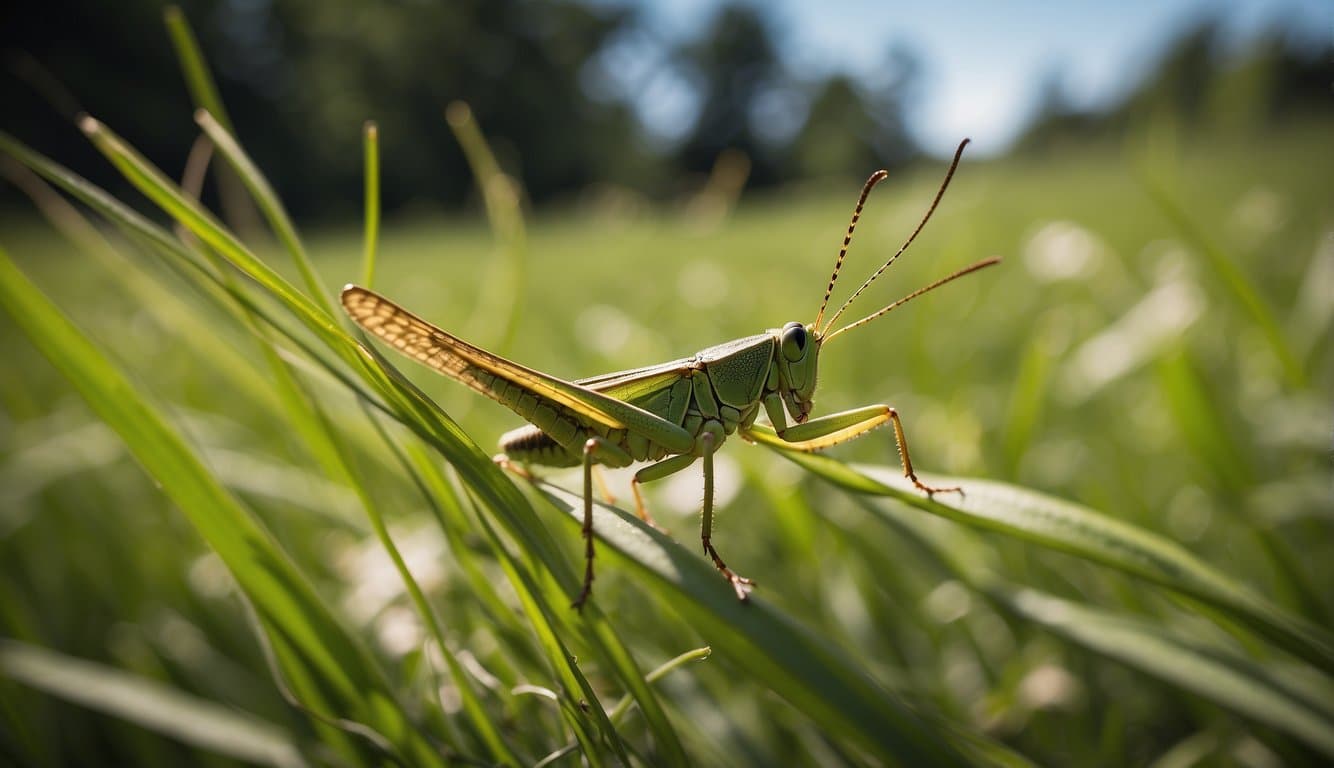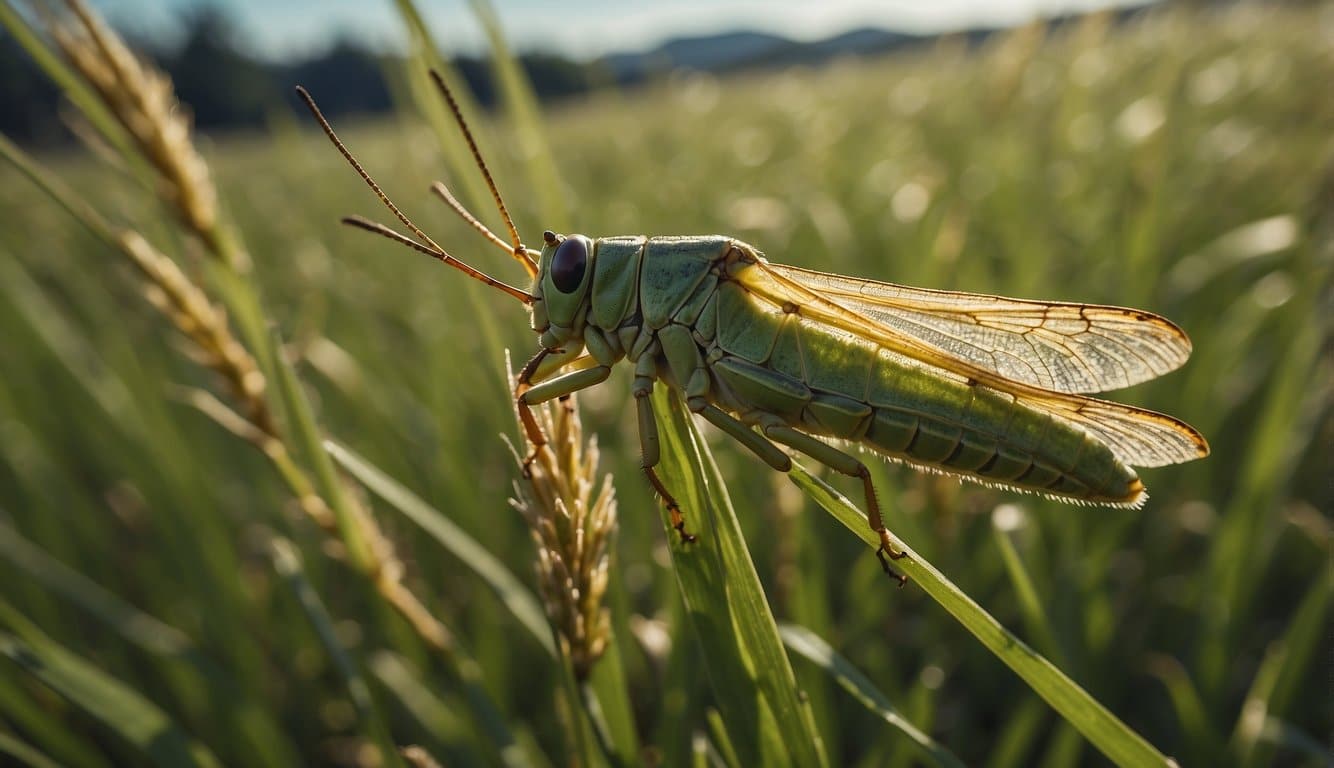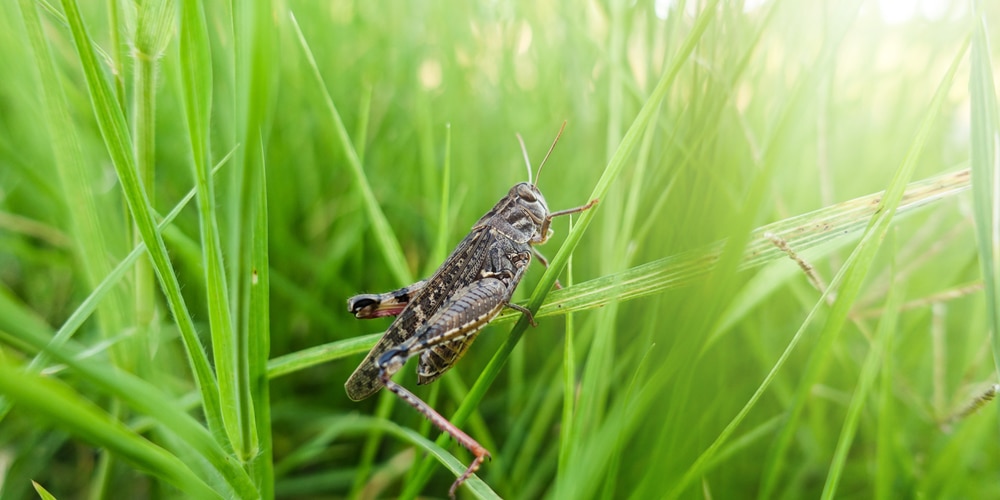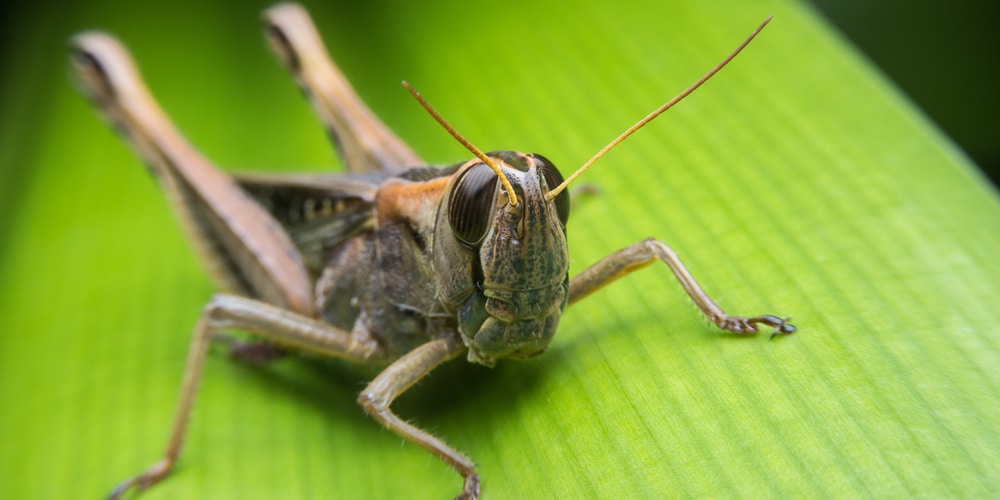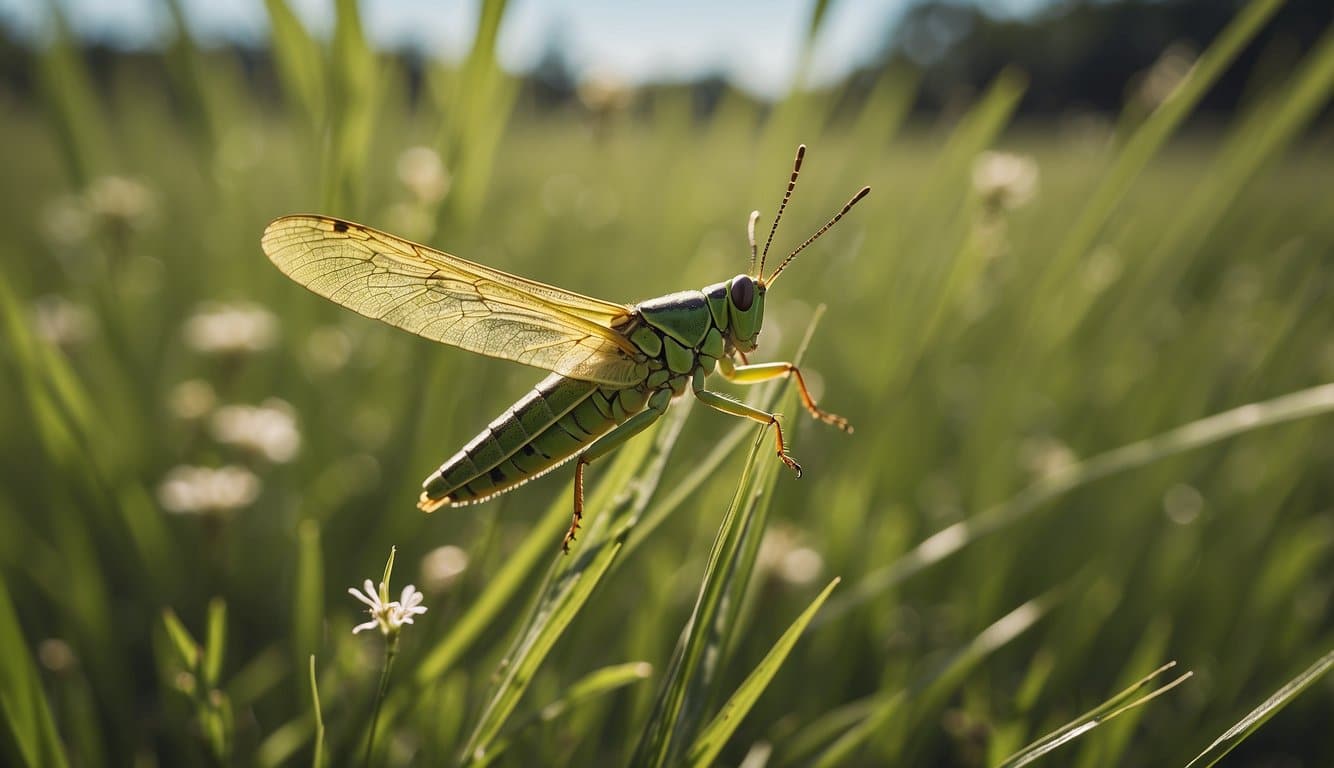| Question | Do Grasshoppers Fly? |
|---|---|
| Answer | Yes, many species can fly short distances. |
| More Info |
|
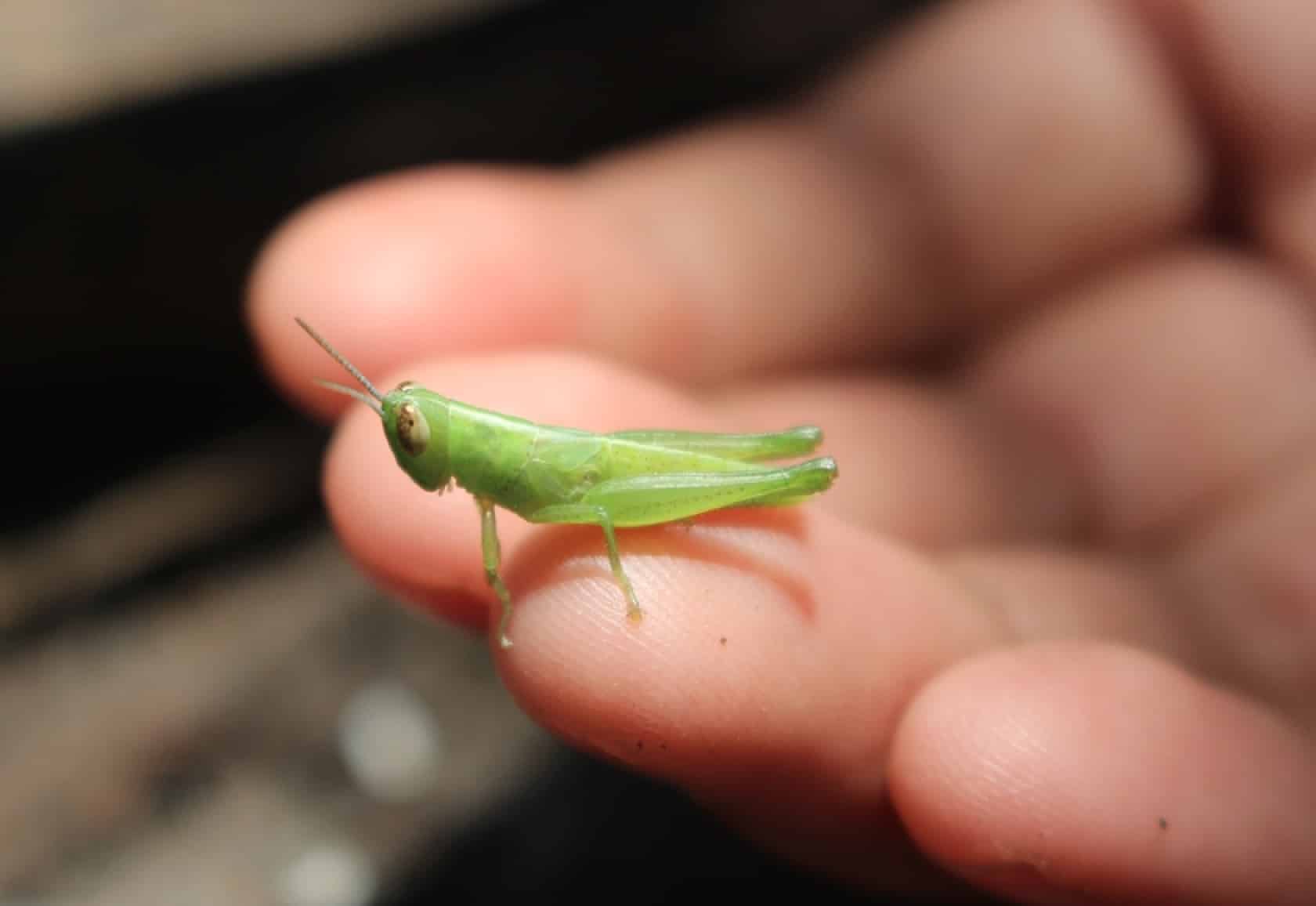
Yes, many grasshopper species can fly. They have two sets of wings, with the front pair being more rigid to cover the hind wings when at rest. The larger, membranous hind wings are used for flying.
Grasshoppers typically fly short distances to escape predators or to find food, and their flight is often a series of short hops rather than long, sustained flights. Flying abilities can vary significantly among different grasshopper species, with some capable of more extended flights than others.
Grasshopper Flight Capabilities
Grasshoppers are equipped with two pairs of wings, enabling them to take to the air with remarkable agility. They possess strong hind legs for jumping, which often catapults them into flight.
Jumping to Flight: The initial jump provides both the altitude and the velocity required for the wings to take over.
Once airborne, the front wings, which are narrower, help with direction and speed, while the broader hind wings provide the lift.
Flight Mechanics:
- Wing Pairs: Two pairs (forewings and hind wings) used for flying.
- Lift and Thrust: Hind legs provide initial thrust, wings create lift.
- Agility: Capable of quick maneuvers in the air.
Flight Range:
- Altitude: Can fly at altitudes up to 280 meters.
- Distance: Capable of covering distances beyond 100 feet in a single flight.
Flight in grasshoppers serves various functions, such as escaping predators, locating food, and even mating rituals. Some species exhibit migratory behavior, moving en masse to new locations when population pressure or environmental conditions dictate.
Grasshopper flights are particularly efficient due to their streamlined bodies and wing structure. The hind wings are folded when not in use and spread out during flight, allowing them to be both agile jumpers and capable fliers.
Although grasshoppers are not among the longest or highest-flying insects, they utilize their flight effectively for short-range escapes and relocation.
Anatomy and Adaptations
Grasshoppers possess specialized anatomical features that facilitate both jumping and flight, key components of their mobility and survival strategies within various ecosystems.
Wing Structure
Grasshoppers have two sets of wings. The front wings, known as tegmina, are narrow, leathery, and serve as protectors for the more delicate hind wings.
Hind wings are broad, membranous, and foldable, enabling them to be tucked away when not in use. This dual-wing configuration allows grasshoppers to make short flights, aiding in quick escapes and foraging.
Muscle System
The muscle system that powers flight in grasshoppers is intricate and efficient.
Large flight muscles within the thorax connect to the base of the wings, and rapid contractions of these muscles cause the wings to beat and generate lift.
Grasshoppers also use their flight muscles in synchronized movements to maintain direction and stability during flight.
Behavioral Patterns
Grasshoppers exhibit distinct locomotive behaviors, primarily jumping and flying, which are influenced by environmental conditions and their lifecycle stages.
Jumping Versus Flying
Jumping is the most iconic action grasshoppers perform. They possess powerful hind legs that allow them to leap distances multiple times their body length.
A grasshopper’s jump can propel it up to 20 times the length of its body, which is a vital maneuver to quickly escape predators or navigate terrain.
Flying, on the other hand, is a behavior grasshoppers use for different reasons. While their wings are well-developed, they are primarily employed for long-distance travel rather than immediate escape.
Flight enables them to reach new habitats, evade danger, or find mates and food sources over a wide area. Grasshoppers can reach heights of 2 to 3 feet and fly over 100 feet in a single go.
Seasonal Flight Activity
Grasshoppers adapt their flying behavior to suit the seasons.
During warmer months, these insects are more active and thus fly more frequently, as they require warmth to be fully mobile.
Cooler temperatures slow down their metabolism and muscle activity, leading to reduced movement and less frequent flight.
Migration is another aspect of seasonal flight behavior. Some grasshopper species undertake long journeys to find new supplies of food or suitable climates, flying for extended periods when environmental conditions necessitate.
Environmental Impact on Flight
Grasshoppers have adapted their flight capabilities to navigate various environmental challenges. Temperature, humidity, and wind patterns significantly influence grasshopper flight patterns and behaviors.
Temperature plays a critical role, as higher temperatures can increase grasshopper metabolism, leading to more frequent and longer flights.
Conversely, lower temperatures may reduce flight activity as the grasshoppers conserve energy.
Humidity levels affect grasshopper flight since dry conditions are generally more favorable for flight activities.
Grasshoppers are less likely to fly in high humidity, which can hinder their aerodynamics and increase the energy required to sustain flight.
Wind patterns and speed also present substantial impacts:
- Tailwinds: They can assist grasshoppers in covering greater distances with less energy exertion.
- Headwinds: They make flight more strenuous and can limit the distances traveled.
- Crosswinds: They can affect the accuracy of flight paths, potentially displacing grasshoppers from intended destinations.
Comparative Analysis
In the realm of insect flight, grasshoppers provide a fascinating case for study due to the variation in their wing types and flight abilities.
Grasshoppers Versus Other Insects
Grasshoppers exhibit distinct flight patterns and capabilities when compared to other insects. While some grasshopper species do have the ability to fly, others are limited or completely lacking in this ability.
For example, the lobiform wing grasshoppers possess weaker flight abilities and are generally considered non-fliers. On the other hand, capable fliers can achieve impressive heights of 2 to 3 feet and distances exceeding 100 feet per jump.
Comparatively, other insects like butterflies and bees are recognized for their adept flying skills facilitated by different wing structures and muscle functions.
Bees, particularly, have wings that beat at incredibly high speeds and a body design that allows for efficient air navigation.
Butterflies, although not as rapid, are equipped for longer distance flights, attested by migrations covering thousands of miles.
Here’s a quick comparison:
| Trait | Grasshoppers | Bees | Butterflies |
|---|---|---|---|
| Wing Shape | Typically narrower | Shorter, broader | Larger, varied shapes |
| Flying Ability | Jumps and short flights | Agile, rapid flight | Suited for long-distance |
| Flight Mechanism | Hind legs provide launch | Wing muscles enable fast beating | Wing muscles efficient for gliding |
Frequently Asked Questions
In exploring the abilities of grasshoppers to fly, several common inquiries arise. These questions address their speed, nocturnal activities, flight duration, capability, range, and altitude during flight.
How fast can grasshoppers achieve flight?
Grasshoppers are known to reach remarkable speeds when flying. Specific speeds vary by species, but they can travel at high velocities, sometimes aiding their escape from predators.
Is nocturnal flight common among grasshoppers?
Most grasshopper species are diurnal, preferring to fly during daylight hours. Nocturnal flight is not typical behavior for grasshoppers.
What is the duration of sustained flight for grasshoppers?
The flight duration for grasshoppers also varies by species, but many are capable of sustained flights ranging from a few seconds to much longer periods when migrating.
Do grasshoppers possess the capability for winged locomotion?
Yes, grasshoppers are capable of winged locomotion. Although not all species have fully developed wings, those that do can use them to fly considerable distances.
What are the maximum distances achievable by grasshoppers in flight?
Distance covered by grasshoppers in flight can be substantial. Some species have been known to cover hundreds of kilometers, particularly in swarm situations such as locust migrations.
Can grasshoppers attain significant altitudes during flight?
Certain grasshopper species can fly at high altitudes. Recorded instances include flights over 280 meters above ground. Potentially, they can fly even higher under favorable updraft conditions.
Last update on 2025-04-21 / Affiliate links / Images from Amazon Product Advertising API



